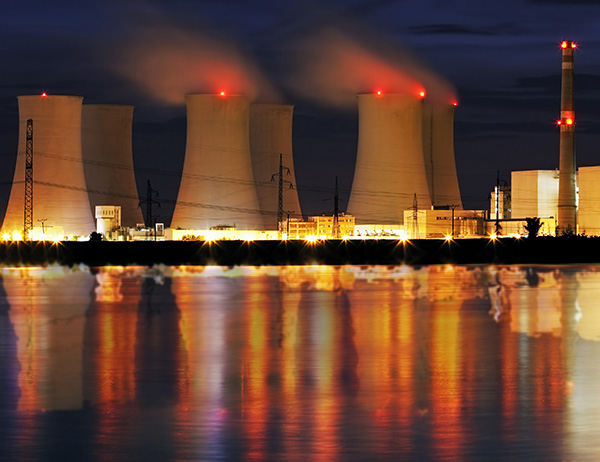GVH uprate method
US NRC-approved thermal power uprate approach
GVH’s approach to thermal power uprates has successfully been implemented in GVH Boiling Water Reactor (BWR) power uprate projects in the US since the early 1990s. Using this process increases a plant’s generating capacity for a fraction of the cost of a new plant. (Any necessary plant modifications are incremental to the power uprate magnitude.)
The power uprates Licensing Topical Reports (LTRs)—developed by GVH and approved by the US NRC—provide a standardized roadmap for utilities to follow in preparing their License Amendment Request (LAR). GVH also uses the LTRs to perform required plant-specific safety analyses to provide inputs to the LAR.
LTRs also contain technical topics that are dispositioned on a generic basis, providing a cost and schedule reduction to the plant-specific power uprate project. This approach provides regulatory predictability and reduces unplanned impact on the overall project cost and schedule.
Power uprates services
Available power uprate strategies and operating domain expansion services
Stretch Power Uprate (SPU)
SPU increases the reactor thermal power up to 105% of Original Licensed Thermal Power (OLTP). This magnitude of power increase is within the original design bases of GVH BWRs. Therefore, required plant modifications to the following systems are expected to be minor:
- Nuclear Steam Supply System (NSSS)
- Balance of Plant (BOP)
- Turbine-Generator (T-G)
Extended Power Uprate (EPU)
EPU increases reactor thermal power from 106% up to 120% OLTP. Modifications to the NSSS, BOP, and T-G will increase in accordance with the thermal power uprates. About 2/3 of the BWR fleet in the US have implemented EPU since the late 1990s.
Thermal Power Optimization (TPO)
Also known as Measurement Uncertainty Recapture (MUR), this process increases reactor thermal power up to 1.5% above the Current Licensed Thermal Power (CLTP) by taking advantage of reduced feedwater flow measurement uncertainty—which can be demonstrated via either a hardware approach (flow measurement instrument improved accuracy) or software (data validation and reconciliation). Required plant modifications to the BOP and T-G are expected to be minor.
TRACG
A GVH proprietary version of the standard Transient Reactor Analysis Code (TRAC), an advanced best-estimate system code used to analyze transients in thermal-hydraulic systems. TRACG was configured specifically to analyze boiling water reactor (BWR) transients.
The US NRC accepts TRACG as a valid code to analyze BWR transients:
Anticipated Operational Occurrence (AOO) transient events, which can limit power uprates and reduce requirements for emergency diesel generator start times
Loss of Coolant Accident (LOCA) as demonstrated at the Mühleberg Nuclear Power Plant (KKM)
TRACG analyses can be a vital part of the Subsequent License Renewal (SLR) process.
To support a TPO uprate, utilities that have implemented EPU at 120% Original Licensed Thermal Power (OLTP) must have their operating power/flow map expanded to the Maximum Extended Load Line Limit Analysis Plus (MELLLA+) to have sufficient core flow window at CLTP.
Upgrade your plant
Power plant upgrade services and products
Contact us


